| |
| Mud Mound and Bank Depositional Environments
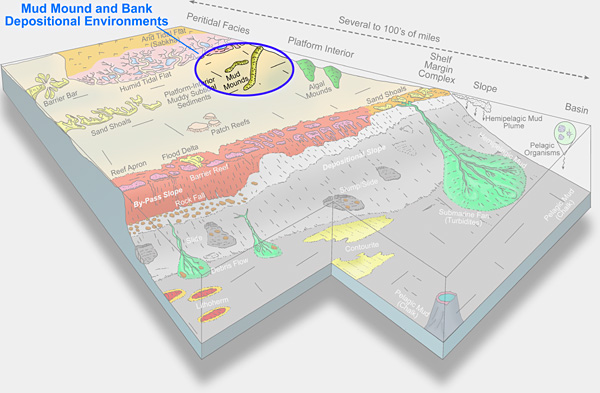
Mud
banks form mounded-to-long, linear, low-energy deposits
of bioturbated mud and shelly mud. Florida Bay has some
of the worlds best developed and studied mud banks. The
mud accumulates in the mounds by baffling of currents by
organisms such as sea grass or algae.
|
| |
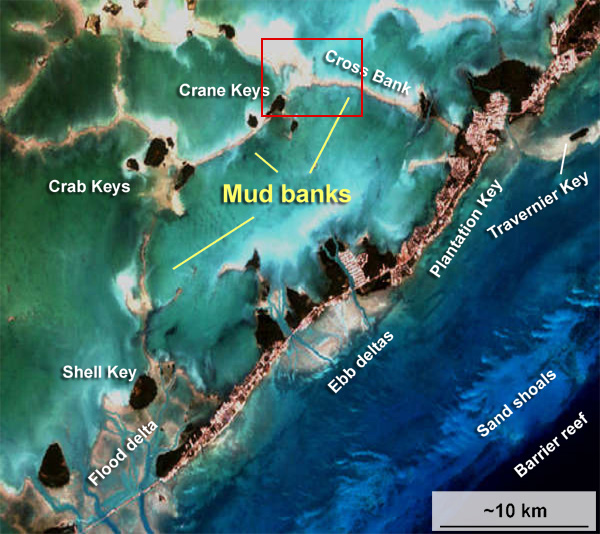 |
|
Florida Bay behind the Florida
Keys showing network of mud banks. Image by Scientific Visualization
Studio, NASA Goddard Space Flight Center; data courtesy
Landsat Project.
|
| |
| .Mud
Bank Model |
There
is generally a windward and leeward side producing a gradation
of energy across the bank. In Florida Bay, sea grass stabilizes
the banks. Island development is common along the tops of
the banks and tidal channels cut the banks.
Enos
(1983) presented a diagrammatic cross section of a Florida
Bay mud bank. He showed that sea grass plays an important
role in stabilizing the bank. In the ancient other organisms
such as algae assumed this role of stabilization
|
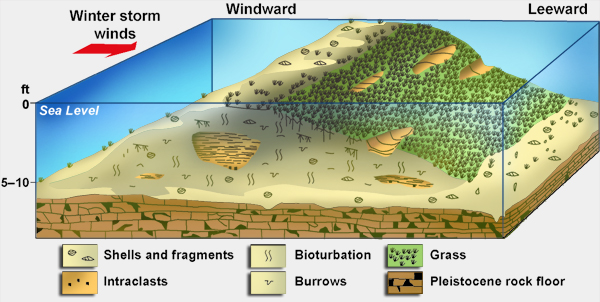 |
| |
|
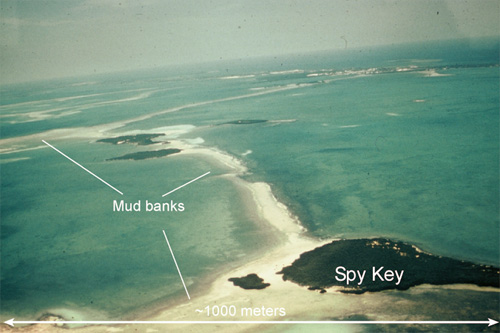 |
| Oblique
aerial photograph of mud banks in Florida Bay. Spy Key
is in the fore ground. |
|
| |
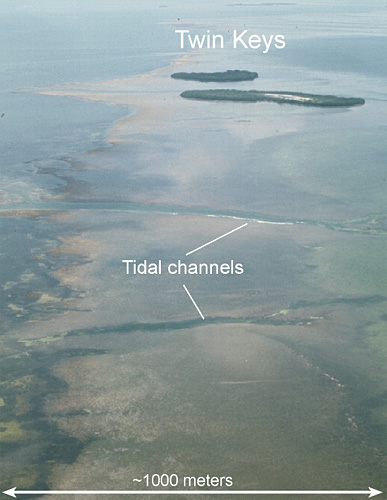 |
| Island
and tidal channel development along Twin Keys mud bank
in Florida Bay. |
|
| |
| Rock
Types |
| In the
ancient, these banks are represented by wackestone to packstone
with some lenses of grainstone. Where not well outlined, as
in photograph below, they would be difficult to distinguish
from other muddy platform-interior sediments because they
have similar fabrics and textures. |
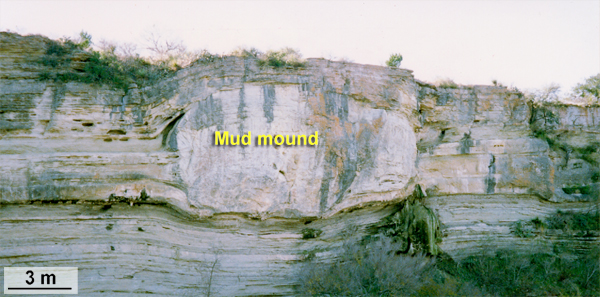 |
| Mud mound
of Pennsylvanian age in Central Texas. Photography courtesy
of Ursula Hammes. |
|
|
|
NEXT
|
|









